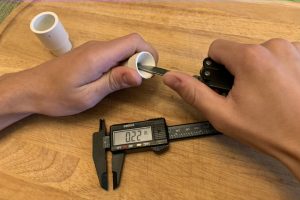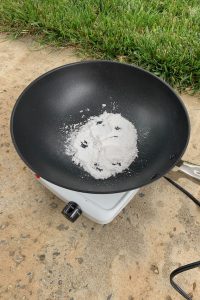Building a rocket without leaving the house

The actions taken in response to COVID-19 have disrupted the schedules of people across the state. While missing out on the last part of our school year and spring sports is certainly regrettable, there are many advantages to a blank schedule.
Due to the COVID-19 quarantine, acquiring model rocketry accessories in store can be difficult. However, this can be solved by looking up exactly what you need. Depending on which level engine you are using, most can be purchased on the Estes website.
As the manufacturer of most lower-level model rocket engines, Estes has a wide variety and selection of stuff to choose from. Amazon also carries much of this stuff although they have a smaller selection to choose from.
Amazon along with Estes also carries launch rods and launch pads, often offering them in a kit or set.
Even though many stores are closed, one does not need to rely on online shopping . Hardware stores remain open, and with one trip to Lowes or Home Depot you can find all the materials necessary.
As we discussed in blog No. 3: basic rocket science, all that is required for a rocket motor is fuel, a combustion chamber, a nozzle and an igniter. With the following materials, you can construct a rocket capable of flying higher than 1,000 feet.
- PVC pipe (¾ inch diameter)
- PVC end cap
- PVC male adapter
- Polymer clay (for the nozzle)
- Super glue
- Cardboard tube (paper-towel roll works well)
- Foam (or anything else lightweight that can be shaped into a nose cone)
- Cardboard (for fins)
- Firework fuse
We left one part out of this list: the fuel itself. While this is simple in design also, it requires a few tools you may or may not have.

Making fuel requires some safety equipment and procedures. First, never heat propellant indoors or over a gas flame. This means you need an electric hot plate, which Amazon sells for $20. You’ll also need long leather gloves, a jacket, eye protection and a face shield. The reasoning behind this is that sugar/potassium nitrate burns at 2,500 °F, not something you want in your face.
The simplest ingredients for a fuel are sugar and potassium nitrate, the former you probably already have and latter can be bought as “stump remover” from Lowes. Also necessary is a scale accurate at least to the gram and a coffee grinder for grinding down the potassium nitrate.
Until we write an article about making rocket fuel, check out Richard Nakka’s website to learn the steps.
In our next blog, we’ll talk about the testing process. As always, our goal with these blogs is to inspire the reader to join us in building rockets. A great resource for learning more about amateur rocketry operations is Rocket Manual for Amateurs, by Bertrand Brinley.
Visit our site at fcrocketprogram.wordpress.com for more details and updates.
Andrew Rieker can be reached via email.
Bryce Foshee can be reached via Twitter and via email.







